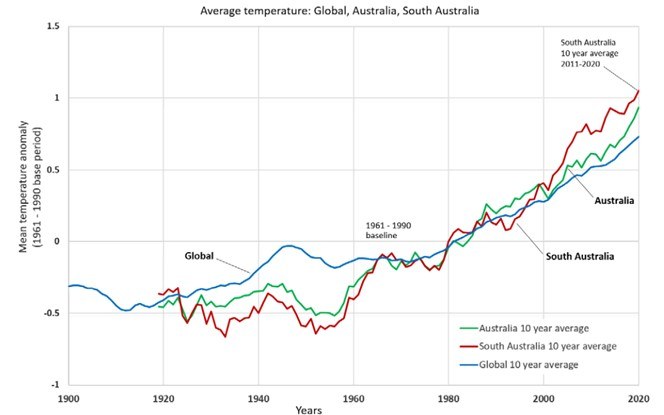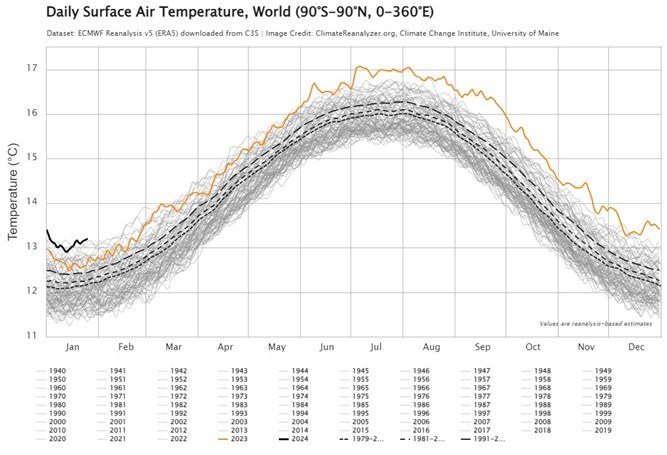- Home
- Environmental Themes
- Climate
- Impacts of Climate Change
- Temperature
Temperature


Mean annual temperature, averaged across South Australia, is increasing and is now approximately 1.1 degrees Celsius (°C) warmer than in the 1970s. South Australia’s 10-year average temperature is actually rising at a higher rate than experienced in Australia and globally.

Average daily maximum temperatures across South Australia are projected to increase by between 1.4°C and 2.2°C by 2050, with days above 40°C predicted to double by 2039.
Australia’s warmest year on record occurred in 2019 when we experienced 41 extremely warm days, about triple from what had been experienced in any year prior to 2000. In 2023, the world has just experienced the hottest September on record with the average surface temperature of 16.38°C, which is 0.5°C above the temperature of the previous warmest September in 2020 and around 1.75°C warmer for the month of September compared with the pre-industrial reference period of 1850-1900.
In 2023, the average global temperature exceeded the hottest ever recorded on earth. Note: this graph includes mean global temperatures that include both the northern and southern hemispheres.

Temperatures in urban environments are exacerbated due to reduced or removal of tree canopy cover. In addition, hard surfaces, such as concrete and roads, along with increased density of housing, dark roofs and artificial turf also radiate heat. Heat maps show that areas with more tree canopy cover are generally cooler, which demonstrates the importance of maintaining and restoring trees in urban environments, particularly with a warming climate.
Changes in temperature will impact food production, ecosystem health and biodiversity, human health and wellbeing and water availability. In Australia, severe and extreme heatwaves have claimed more lives than any other natural hazard.
